Man Ray and Fashion, Musee du Luxembourg,
Beverly Held, Ph.D.
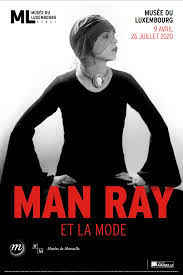
Figure 1.Man Ray and Fashion, exhibition poster, Musee du Luxembourg, 2020
There is an exhibition of (mostly) photographs by Man Ray at the Musee du Luxembourg, called ‘Man Ray and Fashion’. This is the first time the Luxembourg has ventured into the realm of fashion, and I hope it won’t be the last. Opening just on the heels of the Harper’s Bazaar exhibition at the Musee des Arts Decoratifs, the exhibitions inform and enhance each other. Of course I saw them in the order in which the exhibitions opened, but I think it was right to see the Harper’s Bazaar exhibition first, since it is a good introduction to the cast of characters as well as the place and role of fashion magazines in the 19th and 20th centuries.
Obviously, the Musee du Luxembourg didn’t really take a risk when it decided to hold this exhibition. Man Ray (Figure 2) is well known for his work outside the world of fashion and so the exhibition is likely to interest more than just the ‘ladies who lunch’ crowd. You have probably heard of Man Ray, and even if you haven’t, if you stick with me here, you’ll learn about his seminal experiments with photography, his involvement with the Dada and Surrealist movements, the very interesting women in his life, and especially how his fashion photographs informed and were informed by his ‘high art’. Two points to mention from the start: Man Ray hid (or tried to) two (at least) aspects of himself. Firstly, he was born Emmanuel Radnitzky. His father shortened the family surname to Ray, in response to mounting anti-Semitism in New York in the early 20th century. Then Manny (Emmanuel’s nickname) shortened his name to Man. And thus was born the very cool Man Ray, of indeterminate ethnic identity. That is secret number one. Secret number two is this: Man Ray never talked about his work as a fashion photographer. To him, it was a job, it paid the bills so he could do his art.
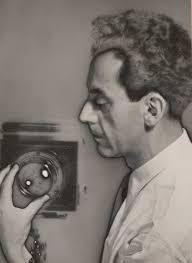
Figure 2. Man Ray and his camera, self portrait 1931
May Ray was born in Philadelphia in 1890 to Russian emigre parents. The family moved to Brooklyn when Emmanuel was a child. Since his father was a tailor and his mother, a seamstress, New York seems a good choice. Like Tissot, whose father was a fine fabric merchant and whose mother was a modiste (hat maker) and Christo, whose father owned a fabric factory, Man Ray was exposed to cloth and clothing when he was very young. Surely that exposure led to an affinity with fashion that he might not otherwise have had.
May Ray studied drawing, drafting and painting. Dreaming of becoming a painter, he turned down a scholarship to study architecture. He initially dabbled in Cubism, but when he met Marcel Duchamp at the age of 25, his fate was sealed. Dada and then Surrealism became his passions. As we learned a few weeks ago, at the Christo exhibition at the Pompidou, Man Ray was the proto-wrapper. In 1920, he wrapped a sewing machine in a blanket and tied it with string. (Figure 3) Entitled L’Enigme d’Isidore Ducasse, Man Ray’s ‘objet’ was inspired by a simile used by the 19th century French writer, Isidore Ducasse, ‘Beautiful as the accidental encounter, on a dissecting table, of a sewing machine and an umbrella’. The Paris Dadaists and later Surrealists were to greatly admire this phrase. For them, the umbrella was the male element, the sewing machine, the female element, and the dissecting table, a bed. (if they were so avant garde, why did they need a bed, never mind). But Man Ray’s wrapped and tied object is not so literal, it is more mysterious, maybe there is a sewing machine wrapped in that blanket, maybe not, it is up to the viewer to intellectually complete the piece. (Figure 4)
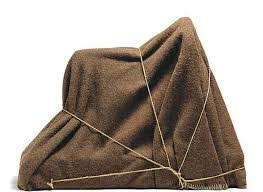
Figure 3. L’Enigme d’Isidore Ducasse, Man Ray, 1920
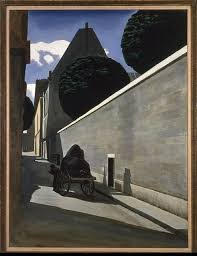
Figure 4. The Enigma on La rue Ferou, Man Ray
In 1920, Duchamp and Man Ray began to use photography, too, to subvert and question reality. Duchamp posed for Ray dressed as a woman. The title of the photograph was Rrose Sélavy, or “Eros, c’est la vie'. (Figure 5) It is a photograph, so it is real, but it is a real photograph of a non-existent person, therefore not really real at all. You can compare it to Duchamp’s first ‘readymade’ his Urinal from a few years earlier (1917) signed “R. Mutt”. (Figure 6) According to Duchamp ‘Mutt’ comes from Mott Works, the name of a large sanitary equipment manufacture, altered to Mutt, after the daily cartoon strip 'Mutt and Jeff'. And then he added R (for Richard) which is French slang for money-bags. The opposite of poverty. Well, anyhow, that is Duchamp’s explaination but never mind, it is Dada, it is conceptual, what can you expect …..
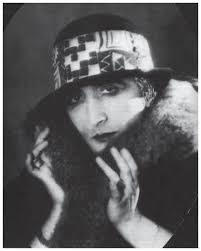
Figure 5. Rrose Sélavy, photograph, Man Ray, 1920
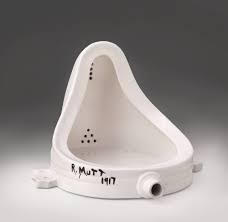
Figure 6. Readymade, Marcel Duchamp, 1917
In 1921, encouraged by Duchamp, Man Ray moved to Paris. He was 31 years old and recovering from a short, failed, marriage. What better place to do that than Montparnasse and who better to do it with than Alice Prin, aka Kiki de Montparnasse, whom he met that same year. Man Ray declared that Kiki’s body was “from head to toe flawless”. Not surprisingly, she became his mistress and his model. Obviously we have to look at two iconic photographs he took of her, both of which are in the exhibition, one from 1924 and the other from 1926. In the first, ‘Le Violon d’Ingres’ (Figure 7) we observe a seated Kiki from the rear. She wears a turban and on each side of her back, Man Ray has painted a violin ‘F Hole’. The turban, of course, is a reference to the bather paintings by Ingres, as for example the Valpincon Bather from 1808, (Figure 8) who we see seated, from the rear, wearing a turban. What about the ‘F holes’. Well, have you ever heard the expression ‘Le Violon d’Ingres’ ? When I was at the Ingres Museum in Montauban, I actually saw Ingres’ violin. (Figure 9) So, what does it mean ? Well, since the early 20th century, le violin d’Ingres’ has meant hobby. For Ingres, playing the violin was his hobby. For some musicians, painting is a hobby. Simple, right? So, how much do you have to know to appreciate this photograph ? Well, you can obviously simply know that you like looking at this young woman’s nice round bottom. The turban can get you to paintings by Ingres and that is a little nicer. But the F holes and the title will take you even farther and you can luxuriate in how lovely it is to know so much.
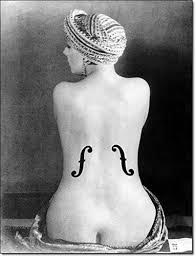
Figure 7. Le Violon d’Ingres, photograph, Man Ray, 1924
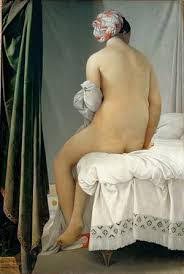
Figure 8. Valpincon Bather, Ingres, 1808
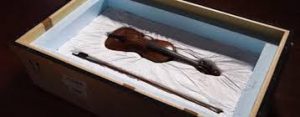
Figure 9. Ingres’ Violin, Montauban, France
The second photograph, from 1926 is entitled ‘Noir et Blanche’. (Figure 10) Against a plain background, Kiki rests her head sideways. Almost disembodied since while her head is in focus, her shoulder and arm are not. Her eyes, closed, her lips, shut, her eyebrows, two thin arches. She holds an African mask, in her hand, right side up. Black mask, white face. Black Africa, White Europe. Man Ray also printed the negative version in which, of course, black and white, primitive and civilized, are reversed. (Figure 11) The photo was first published in Vogue. And that will take us to the subject we are ostensibly discussing today, May Ray and Fashion Photography.
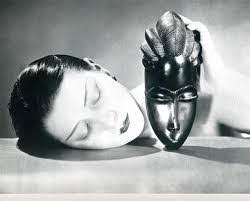
Figure 10. Noir et Blanche, photograph, Man Ray, 1926

Figure 11. Noir et Blanche negative, May Ray, 1926
Man Ray didn’t like to talk about his fashion photos, they were a means to an end: to pay for his studio, his brushes, his paint. Maybe that was so for his first venture into fashion photography, when he worked for Paul Poiret, a leading Paris couturier of the 1920’s, for whom Man Ray took photographs of wealthy women like Peggy Guggenheim (Figure 12) and Nancy Cunard (Figure 13) wearing Poiret’s designs. A photo of Denis Poiret from that period points to how Man Ray was attempting to integrate his photographs with high art. In this image, the model stands next to a Brancusi sculpture. (Figure 14) The photo is interesting both visually and artistically: the sculpture’s reflections enliven the piece and its presence elevates the photograph.

Figure 12. Peggy Guggenheim in P. Poiret, photograph, Man Ray
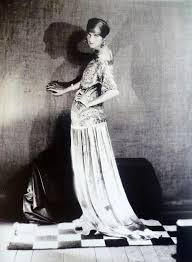
Figure 13. Nancy Cunard in P. Poiret, photograph, Man Ray
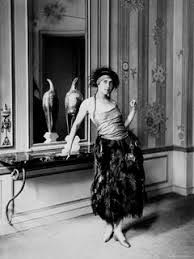
Paul Poiret introduced Man Ray to various fashion magazine editors. Ray worked primarily for Vogue from the mid 1920s to 1930, and for Harper’s Bazaar, from the mid 1930s until he left Paris in 1940. With Alexey Brodovitch’s (Harper’s Bazaar’s artistic direction) encouragement and indeed even before, he explored photography’s possibilities. He experimented with lighting, with framing, with distortion, with close-ups and overexposures; with juxtapositions of the negative and positive, and the play of light and shadow. Like some kind of crazy scientist, Man Ray conducted chemical and optical experiments in his darkroom. “I deliberately dodged all the rules,” he said. “I mixed the most insane products together, I used film way past its use-by date, I committed heinous crimes against chemistry and photography.”
He also modestly invented what he called the ‘rayography’ in 1921 to 'describe his particular approach to making photograms, photographic prints made by placing objects on photosensitive paper and exposing it to light, without the use of a camera”. In 1922, he concentrated on superimposition, that is, the placement of one image on top of an already-existing image and in 1929 it was solarization, which Ray and Lee Miller (more about her in a moment) accidentally discovered when they broke the golden rule of darkroom photography: ‘Do not turn on the light while in the darkroom’. Once they saw the results, Man Ray couldn’t get enough, and he momentarily flickered the darkroom lights whenever he could.
Man Ray’s manipulated images are widely considered the origins of Surrealist photography, a combination of reality and the subconscious. In ‘Champs Délicieux’ (Figure 15) for example, his rayograph series from 1922, May Ray placed various translucent and opaque objects directly onto the light sensitive paper during exposure to create a shadowy imprint of the object’s form. Completely removed from any context, the image becomes what the viewer finds in it, brings to it.
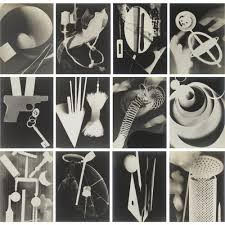
Figure 15. Champs Délicieux, Rayograph series, Man Ray, 1922
When Man Ray shot photographs for his fashion clients, he shot sparingly and limited himself to only those images selected for publication. This was because it was standard practice at the time that the fashion journals not only owned the prints, they also owned the negatives of the photographs they bought. So, creating as few photographs and negatives as possible for his clients enabled him to continue experimenting artistically with the images he didn’t sell to them.
Like Richard Avedon a generation later, (as we learned at the Harper’s Bazaar exhibition) a photo shoot for fashion magazines wasn’t where the money was, it was in the advertisement commissions which followed. Let’s look at a few of Man Ray’s advertisements. Les Larmes, (Figure 16) from 1932, started out as a photograph of the eyes of his model. Then Man Ray put glass tears on her face. What is the back story, you ask; why is she so distressed. The image reads like a still from a movie. She looks like one of those silent movie beauties, with her dramatic upward gaze. Man Ray made this photograph around the time of his breakup with Lee Miller. Not long afterwards, the image was selected as an advertisement for a new mascara. (Figure 17) Underneath the image, the copy assured the woman reading it that she could cry tears of sadness or tears of joy without worrying about her mascara running and ruining her beautiful eyes.
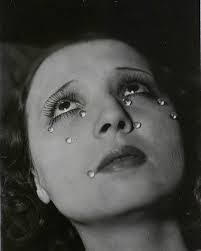
Figure 16. Les Larmes, photograph, Man Ray, 1932

Figure 17. Les Larmes mascara ad
There is another ad, a really odd one for Wrigley's Double Mint Chewing Gum from a few years later. A woman gazes at a marble bust whose lips are painted. The copy reads: ''Every week go to your beauty shop - and daily enjoy Double Mint gum. Two great beauty secrets for every woman.’’ Although exactly how Double Mint gum will enhance anyone’s beauty is anyone’s guess. Breath maybe, beauty, not so much. * (Figure 18)

Figure 18. Venus Total Eclipse, photograph, Man Ray 1930
While it is true that Man Ray wanted to separate his fashion photography from his art, the fact of the matter is that, as with the model’s eyes or model with the bust of a Greek statue, there was considerable overlap between the two. Another example is his 1929 photograph of Lee Miller’s lips which formed the basis of his 1936 painting. ‘Observatory Time - The Lovers’, which in turn became the backdrop for a Harper’s Bazaar fashion editorial of the same year. (Figure 19) (Figure 20)
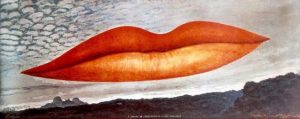
Figure 19. Observatory Time - The Lovers, painting, Man Ray, 1936
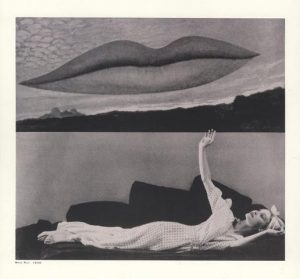
Figure 20. Observatory Time - The Lovers, Harper’s Bazaar magazine, 1936
Let’s go back to Lee Miller, shall we. (Figure 21) I’m guessing that many of you have heard of her. I saw an exhibition of Man and Lee (Ray and Miller?) work some years ago at the Legion of Honor Museum in San Francisco. I can assure you it did nothing to endear Man Ray to me one bit. Lee Miller was born in 1907, so she was 17 years younger than Ray. Her early life was filled with surprises, some awful, some amazing. When she was 7 years old, she was raped and infected with gonorrhea by the teenage son of her parents’ friends. Lee’s father, an engineer and amateur photographer, often photographed his teenage daughter, nude. And when he had time, he taught her about the technical aspects of photography. When Lee was 19, she was about to cross the street in Manhattan. A man pulled her back onto the sidewalk as a truck or car (accounts vary) came barreling along which would surely have struck her otherwise. The man who saved her was the Conde Nast, who took one look at her and told her she should be a model. And then, just like that, she was. She appeared on the cover of Vogue, March 1927, in a drawing by George Lepage, wearing a blue hat and pearls. (Figure 22) Apparently Miller's look was exactly right, she was the essence of the 'modern girl.”
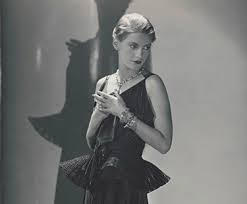
Figure 21. Lee Miller, photograph Man Ray, 1930
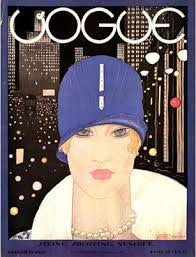
Figure 22. Lee Miller, cover Vogue Magazine, 1927
Lee modeled for a couple more years and then moved to Paris to find May Ray. She arrived at his studio, told him she was his new student, and then she was, even though he didn’t take students. Yes, they became lovers, but Lee was very talented and so while she may have been his muse, she was also his collaborator. And it gets messy because they collaborated so closely that photographs Lee claimed she took are now credited to Ray. Remember I mentioned Solarization as one of the chance techniques that Man Ray discovered. Turns out there is another explanation for how the technique was discovered. According to Lee, she was processing a print when a mouse ran over her foot. She instinctively turned on the light to see what it was and that was how they discovered what happens to a print when you turn on the light mid-development. They had a nasty fight, Man Ray kicked her out, she bought a ticket for New York and left. Man Ray was heartbroken and he used images of Lee’s lips and her eyes to finally get over her. He eventually did and they became friends again in 1937. During the war Lee was a war correspondent for Conde Nast publications and was with American troops when they liberated Buchenwald and Dachau. After the war, suffering from post traumatic stress syndrome, she put her photography aside.
When the Nazis came to Paris in 1940, Man Ray, not fitting into the category of ‘optimistic Jew’ fled the City for the United States where he stayed until 1951. Finally he returned to Paris with his new wife, the dancer and model Juliet Browner who would be his model/muse until his death in 1976. Man Ray may have intended to subvert traditional fashion photography, but he did more than that, fashion photography after Man Ray became a recognized art form. And Man Ray’s images continue to influence later generations of fashion designers and photographers. Here is one example, the 1999 advertisement for Jean Paul Gaultier’s perfume, Classique. (Figure 23) Rather than a model holding an African mask, this model holds a torso shaped bottle of perfume. And here’s another, an ad for nail polish that appeared in 1970 in French Vogue which references Man Ray’s advertisement for Elisabeth Arden Electrotherapy Facial Mask from 1932. (Figure 24)I wish you were here and we could have enjoyed the Harper’s Bazaar exhibition and this one on May Ray together, discussing how they each went about presenting the story they are telling. But, alas, that isn’t possible at the moment but I very much enjoyed telling you about it and I look forward to sharing another exhibition next week.
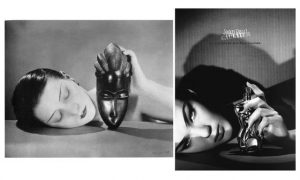
Figure 23. Left Noir et Blanche, photograph Man Ray, Right ad for JP Gaultier perfume, ‘Classique'
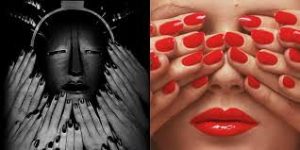
Further reading: https://www.nytimes.com/1990/09/14/arts/illuminating-man-ray-as-fashion-photographer.html; https://www.dazeddigital.com/fashion/article/33664/1/how-man-ray-changed-the-face-of-fashion-photography, https://artsandculture.google.com/exhibit/man-ray-in-paris-museu-oscar-niemeyer/yAIS-g_S1ucjJA?hl=en; The Radical Eye: Modernist Photography From The Sir Elton John Collection runs until May 17, 2017 at Tate Modern, (https://www.moma.org/collection/terms/176)

1 comment
Julia Frey October 4, 2020
Article is fascinating, despite screw-ups with images (see figs 13 & 14). You forgot to mention that Kiki's sideways head in fig. 10 is based on a Brancusi sculpture "la Muse endormie 1", ca. 1910. But there's never enough room for everything, is there? I learned a lot, and really enjoyed your preserntation. Bravo.